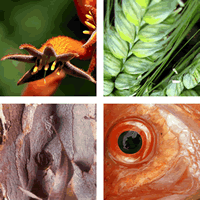Overview of the Cattle Industry Funding Scheme
In June 2010, the Cattle Biosecurity Industry Funding Scheme (IFS) was introduced to address biosecurity threats relevant to the Western Australian cattle industry. The Scheme was established under the Biosecurity and Agriculture Management Act 2007 (BAM Act) as a mechanism to enable cattle producers to identify the pest and disease priorities at a whole-of-industry level, and then to raise funds for programs that address these priorities.
Funds are raised through a producer contribution on each chargeable sale. A ‘chargeable sale’ means a sale by the owner of cattle (live or carcasses) that are located on a property within the Schemes’ area of operation or moved from the property for the purpose of offering them for sale/slaughter.
Producers do not have to participate in the Scheme — there is a mechanism that allows them to ‘opt out’. Opting out does not remove the legal requirement to deal with the pests and diseases to which the Scheme relates, but does disqualify the producer from any benefits provided by the Scheme such as assistance and compensation.
The Cattle IFS is overseen by a seven-member Industry Management Committee (IMC). The Minister for Agriculture and Food appoints the IMC members after inviting industry nominations and receiving advice from an Industry Appointments Committee. As required by regulation, the majority of the IMC are full participants of the Cattle IFS.
The IMC is responsible for approving the biosecurity-related programs funded through the Scheme, and providing advice to the Minister on the Scheme’s area of operation and the contribution rate.
In addition, the IMC oversee the funds previously collected via the Cattle Industry Compensation Fund, a fund established under the Cattle Industry Compensation Act 1965, which were transferred to the IFS Account in 2010.
The state government, through the Department of Agriculture and Food, Western Australia (DAFWA), provide the necessary support to ensure proper governance and the effective operation of the Scheme and IMC. This includes secretariat, communications, policy and technical support, as well as financial management. Furthermore, the normal regulatory inspection and compliance activities undertaken by DAFWA closely complement the priorities of the IMC.
2013/14 Cattle IFS at a glance
- contributions of 20 cents per head/carcass produced in Western Australia
- contributions totalling $175 656 were received
- contributions were used to fund surveillance programs for bovine Johne’s disease, enzootic bovine leucosis and bovine tuberculosis
- the total cost of the surveillance programs (including compensation) was $291 403, of which $198 663 was used for BJD surveillance in the Kimberley
- committee costs totalled $22 989
- one producer opted-out of the Scheme, and applied for a refund of their contributions totalling $101
- $374 877 from the previous Cattle Industry Compensation Fund was used for various projects that benefit the WA cattle industry.

